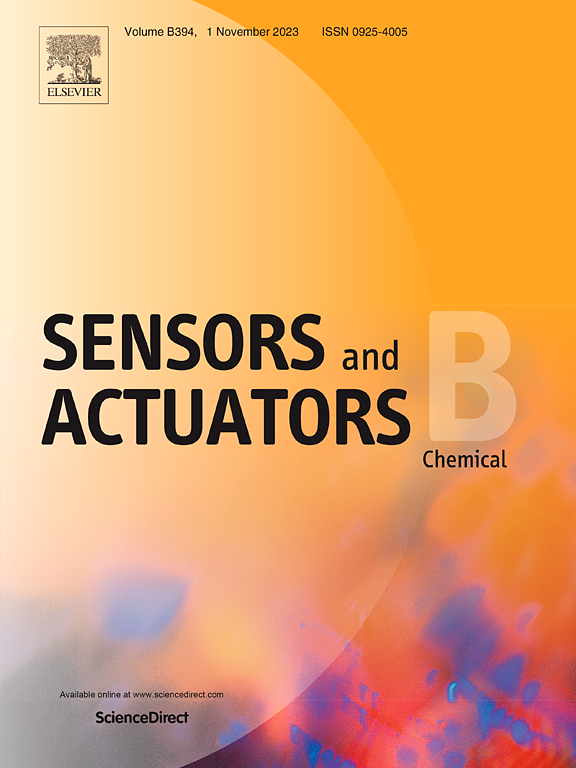Ca & Al共掺杂ZnO纳米结构的合成及其形貌相关的CO2气敏性能
IF 8
1区 化学
Q1 CHEMISTRY, ANALYTICAL
引用次数: 0
摘要
由于二氧化碳排放对气候变化的影响,监测二氧化碳排放至关重要,因此有必要开发在中等工作温度下具有高灵敏度和选择性的高效气体传感器。本研究考察了ZnO纳米材料的气敏性能,特别是未掺杂ZnO和Ca、Al共掺杂ZnO对CO2的气敏检测。气体传感测量在一个总流量为1000 sccm的固定腔室中进行,调节温度和CO2气体浓度在1000到5000 ppm之间。采用溶胶-凝胶法制备了纳米线、纳米棒和纳米颗粒三种类型的ZnO纳米材料,并对其气敏性能进行了评价。其中,NWs对CO2的响应最高。Ca,Al共掺杂ZnO NWs表现出优异的气敏性,特别是在高CO2浓度和低CO2浓度下。CO2的检出限为6.65 ppm。此外,共掺杂ZnO NWs对各种气体都有显著的响应,其中CO2的响应最高(在5,000 ppm时为9.56)。这一性能突出了Ca,Al共掺杂ZnO NWs在中等温度下作为有效的CO2检测气体传感器的强大潜力。本文章由计算机程序翻译,如有差异,请以英文原文为准。
Synthesis and morphology-dependent CO2 gas sensing properties of Ca & Al codoped ZnO nanostructures
Monitoring CO2 emissions is critical due to their impact on climate change, necessitating the development of efficient gas sensors with high sensitivity and selectivity at moderate operating temperatures. This study investigated the gas-sensing performance of ZnO nanomaterials, particularly undoped ZnO and Ca,Al codoped ZnO, for CO2 detection. Gas sensing measurements were conducted in a chamber with a fixed total flow rate of 1000 sccm, adjusting the temperature and CO2 gas concentration between 1000 and 5000 ppm. Three types of ZnO nanomaterials, including nanowires (NWs), nanorods, and nanoparticles, were synthesized via a sol–gel method and evaluated for their gas-sensing capabilities. Among these, the NWs exhibited the highest response to CO2. The Ca,Al codoped ZnO NWs demonstrated superior gas sensitivity, particularly at high CO2 concentrations and at lower levels. The limit of detection for CO2 was 6.65 ppm. Furthermore, the codoped ZnO NWs exhibited significant responses to various gases, with the highest response recorded for CO2 (9.56 at 5000 ppm). This performance highlights the strong potential of the Ca,Al codoped ZnO NWs as effective gas sensors for CO2 detection at moderate temperatures.
求助全文
通过发布文献求助,成功后即可免费获取论文全文。
去求助
来源期刊

Sensors and Actuators B: Chemical
工程技术-电化学
CiteScore
14.60
自引率
11.90%
发文量
1776
审稿时长
3.2 months
期刊介绍:
Sensors & Actuators, B: Chemical is an international journal focused on the research and development of chemical transducers. It covers chemical sensors and biosensors, chemical actuators, and analytical microsystems. The journal is interdisciplinary, aiming to publish original works showcasing substantial advancements beyond the current state of the art in these fields, with practical applicability to solving meaningful analytical problems. Review articles are accepted by invitation from an Editor of the journal.
 求助内容:
求助内容: 应助结果提醒方式:
应助结果提醒方式:


